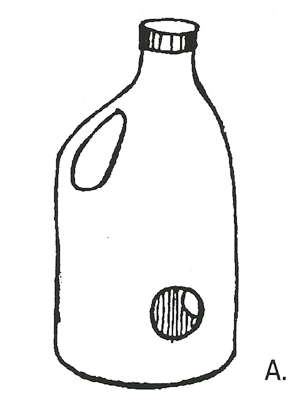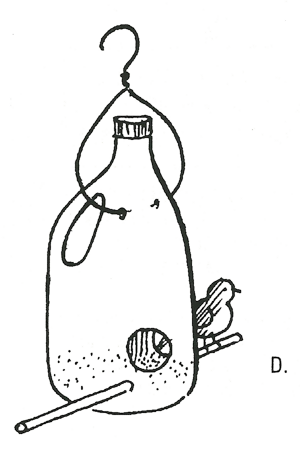
The Coati (co-AH-tee) is a relative of the raccoon with a long nose, masked face, and a striped tail. Coatis are curious and energetic, just like kids!
Coati Club News, April 2016
We have been seeing a lot of birds in our recent programs here at the Desert Museum and at Sweetwater Wetlands. Tucson is home to a variety of birds. Some live here all year, and some are just winter visitors.
Beaks! Beaks! Beaks!
Do you have favorite foods? Birds do too. Some eat insects, fish, or other animals. Others sip nectar or eat fruit. Many are seed-eaters.


Each bird has a special beak adapted to the kind of food it eats. Just as a hummingbird cannot gobble up mice, a hawk could not possibly sip nectar from a flower! Some birds, like hawks, have beaks that are best for tearing meat. Hummingbird beaks are long and thin, enabling them to probe flowers for nectar. Others, like cardinals, have strong cone-shaped beaks for cracking seeds. Woodpeckers have beaks that are sharp and pointed, adapted to picking up insects and boring into tree trunks or fruit. Try our bird beak crossword puzzle to see what foods common Tucson area birds eat.
Look Who’s Coming to Dinner!
Spring is a wonderful time to watch birds, and setting up a feeding station lets you do so at home as wild birds come to eat. You can hang a feeder from a tree, or mount it on a pole. Be sure to place the feeding station in a place where you can see. Once the birds get used to coming, they will visit regularly, and you can watch them.
Here’s an easy way to make a feeder by recycling a plastic jug. (You may need to ask an adult for help.)
-
 Get an empty plastic half-gallon juice or milk bottle. Make sure it is clean and dry. Keep the lid. Trace the outline of a 2 inch jar lid on opposite sides of the plastic bottle, about 2 inches from the bottom. Cut out the circles with sharp scissors.
Get an empty plastic half-gallon juice or milk bottle. Make sure it is clean and dry. Keep the lid. Trace the outline of a 2 inch jar lid on opposite sides of the plastic bottle, about 2 inches from the bottom. Cut out the circles with sharp scissors.
-
 To make a perch, use a thick nail to poke a hole about ½ inch under each circle and push through a ¼ inch wooden dowel about 8 inches long. The dowel should pass through one hole, through the bottle, and out the hole on the other side.
To make a perch, use a thick nail to poke a hole about ½ inch under each circle and push through a ¼ inch wooden dowel about 8 inches long. The dowel should pass through one hole, through the bottle, and out the hole on the other side.
- Poke a few small holes in the bottom of the bottle so rainwater can drain out. (See Arrow)
-
 Get a wire coat hanger and cut it as shown. You will need a wire cutter for this.
Get a wire coat hanger and cut it as shown. You will need a wire cutter for this.
-
 Poke two nail holes in the neck of the bottle, opposite each other about 1 inch from the top. Push the ends of the hanger into the holes. Be sure that the feeder hangs evenly and that the ends of the hanger don’t slip out of the holes. (In place of a hanger, heavy string may be used. Thread it through the holes, and tie the ends together tightly, to make a loop that can be hung over a tree branch or pole.)
Poke two nail holes in the neck of the bottle, opposite each other about 1 inch from the top. Push the ends of the hanger into the holes. Be sure that the feeder hangs evenly and that the ends of the hanger don’t slip out of the holes. (In place of a hanger, heavy string may be used. Thread it through the holes, and tie the ends together tightly, to make a loop that can be hung over a tree branch or pole.)
- Fill your feeder with birdseed and replace the lid.
Now hang it from a tree and watch the birds come to feed! The seed-eaters, such as sparrows, quail, finches, and cardinals, will eat birdseed sold at pet stores, feed stores, bird stores, or grocery markets. You can also create your own mix! Offer a variety of foods at your station. More birdfeeder recipes.
How many birds can you identify at your feeding station? Check out Tucson Audubon Society and the Tree of Life Web Project listing for more information on common Tucson birds.
Crossword puzzle answers:
Down: 1. Cactus wren, 2. Quail, 3. Vulture, 5. Eagle, 9. Hawk, 10. Dove
Across: 4. Cardinal, 6. Roadrunner, 7. Owl, 8. Woodpecker, 9. Hummingbird
Photo credits: Woodpecker, Hummingbird, Hawk © Rhonda Spencer; Cardinal © Sam Wilson

